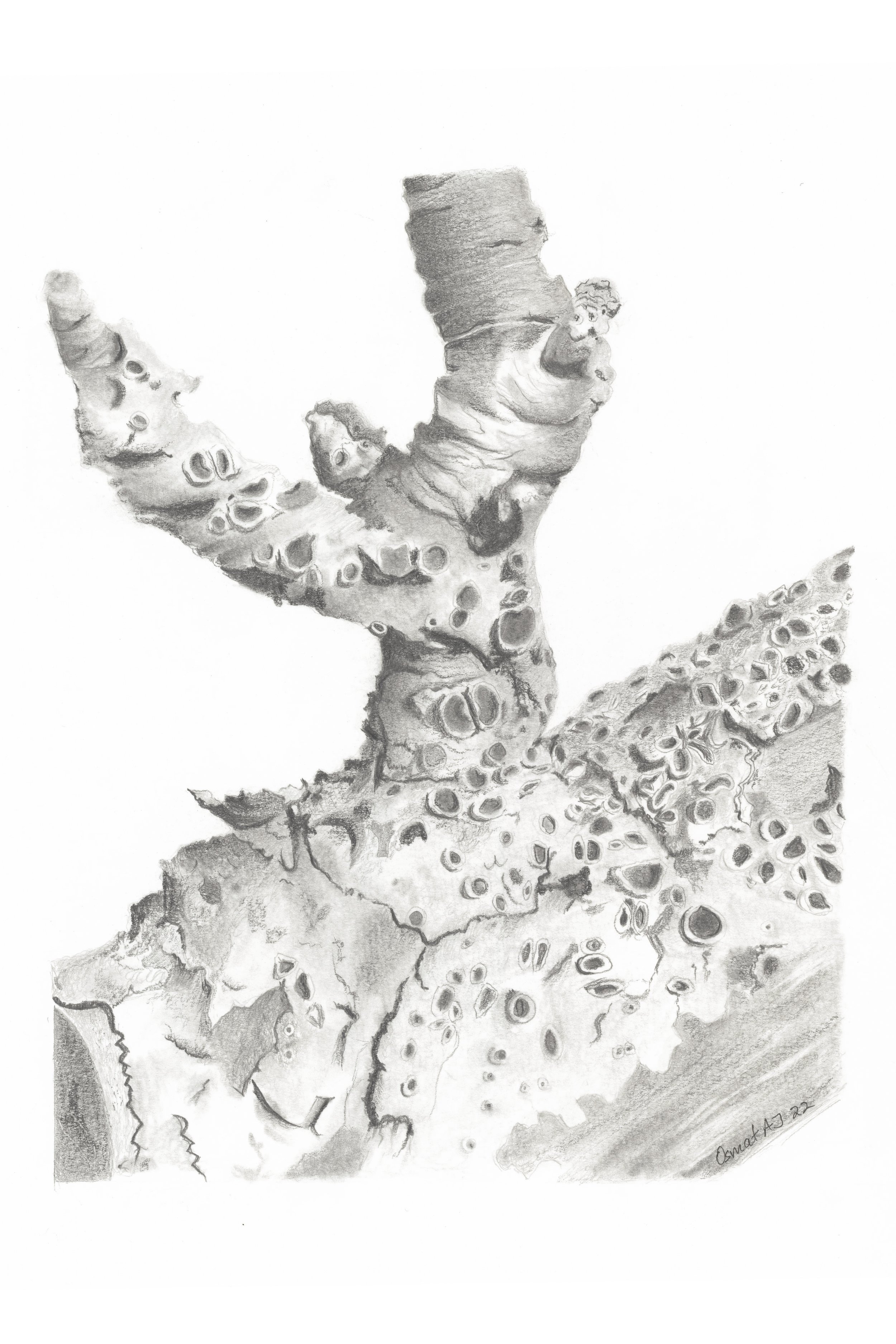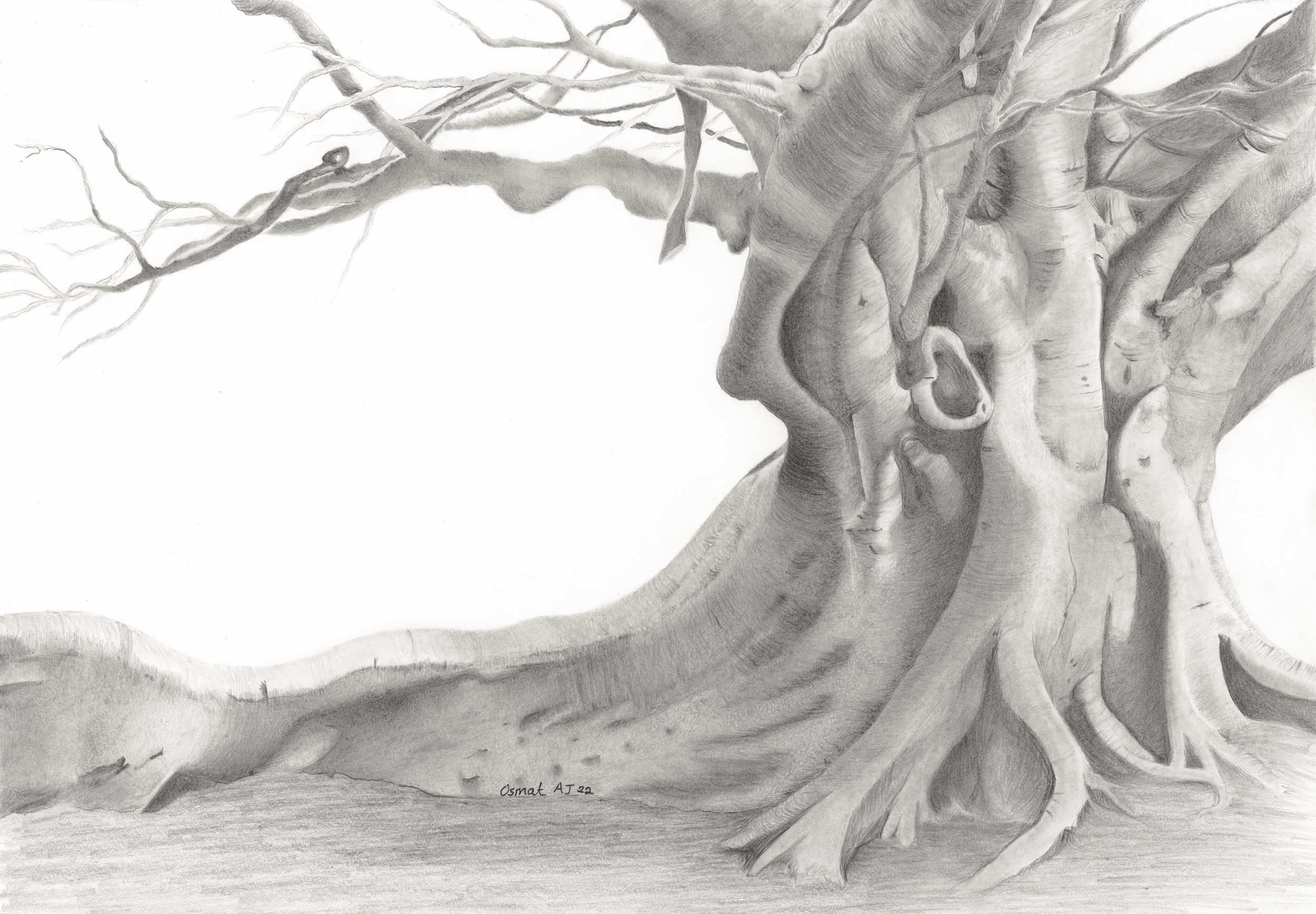Imagining a Resilient Tomorrow
How are you feeling the shocks of the changed world around us?
How would the collision between nature, human connection, and technology fare tomorrow?
What is most threatening to our well-being?
What is climate change or global warming?
You may or may not have thought about these questions, but walking out of your home one day, I invite to lift your gaze to the sky. When you spot a tree or a forest, what do you see?
Beating Heart
Unlike other plants, trees have a unique body structure made of trunk, branches, and leaves (above the ground) and roots (below the ground). The trunk facilitates nutrients flow and is therefore the communication system within the tree microenvironment. The leaves soak up the carbon dioxide (CO2) emitted into the atmosphere and through a photosynthesis process and with some help from the sun’s energy, the tree generates its food to grow and as a by-product of such a process, oxygen is released to better our health and well-being. Some call trees the ‘earth’s lungs’ and others refer to them as ‘earth’s beating heart’.
As trees grow, they store carbon in their various parts and in soil, but also return some of the CO2 back into the atmosphere through a respiration process.
With more than 58,000 species, trees nurture the soil which helps us grow food. They conserve, regulate water flow, and some persevere in drought times. Trees provide heat and shade us from the sun. Trees engage in mutual aid plays with other living organisms of their ecosystem.
Since 1950s though, trees’ resilience has declined, and research findings point to the unprecedented impact of human development activities and weather changes.
Balancing Act
Communities of trees (forests, groves, etc..) cover 30% of the planet’s land space, participate in the citizenry of a resilient tomorrow by their ability to absorb atmospheric carbon emissions and provide human society with a set of services.
Life Blood
Forests interact with water in multiple ways. On one hand, trees absorb water and buffer its spread in their crowns, roots, and soil and forests, on the other hand, they regulate flooding and balance river flows. And in the past two decades, we have learned that when trees absorb water from their deep root system for their own growth, unused water is released as vapor through microscopic pores in their leaves. The repeated cycles of evaporation and transpiration in forests recycle rains into clouds and impact weather patterns. And with trees having wide canopies and large leaf surface areas, more than 40% of precipitation is now estimated to come from land rather than oceans.
Do forests also trigger winds to deliver rains across the globe?
Holding On
Torn Pages
Spark Wood
Trees protect our soil. When barks, leaves, or stems fall to the ground, carbon continues to accumulate in forest floors, roots, and in soil organic matter. Below ground carbon stocks exceed those above ground but the rate of carbon accumulation changes over time and vary based on tree species, land use management, and severity of disturbances such as wildfire and drought.
How are carbon stocks maximized in Australian trees/forests to mitigate climate change?
Little Infinities
Sticking On
Tree cracks, crevices, and hollows or forest grounds provide habitat for wildlife. Trees, also cooperate with other living organisms and engage in mutual aid plays within an ecosystem. For example, tree branches host lichens, organisms made up of symbiotic relationships between a fungus and a green alga or cyanobacteria.
When a forest is converted to an agriculture land or disturbed by severe weather conditions, the equilibrium of such system and its stability are disrupted.
Imagine: what future mitigation strategies could be introduced to regain peace with nature, while considering the need for and pressure from human development?
Roads Diverged
Unnamed
Harvested wood from trees is used to build homes, to shelter us, heat us in winter, and when left on the ground, it decomposes and recycle nutrients in the soil.
Unravelled
Snapping Point
Growing Wild
Climbing Home
Trees have a deep root system and can live for thousands of years. See the majestic Moreton Bay fig trees in the Sydney Botanic Garden, and the over a thousand year old Bristlecone Pines in White Mountains of Eastern California, or the ancient Cedars of Lebanon groves, all of which have witnessed centuries of change, fought and won many battles with time, rebuffed, and endured natural and human disturbances hold the secret of our resilient tomorrow.
Growing Wild
Timeless
How does carbon storage capacity in a forest change over time and space? In a changing climate, where would these tree species migrate to? Which ones are more resilient and how to render some more resilient to disturbances?
In the science of climate, there are many unknown webs of connections that we all need to discover, analyze, and map so we can understand the local impact from global disturbances, foresee what will happen as changes unfold, and make informed decisions on when and where proper actions are required.
So, if you manage to lift your gaze on one of the trees or walk into a forest/grove, it is okay to be passionately curious and get to know them closely and personally to guard old ones or welcome new ones.
Those who love trees and aware of their role in our environment, like you and me, have been supporting collective environmental action. Now, I invite you to support with me women innovators in this space.














